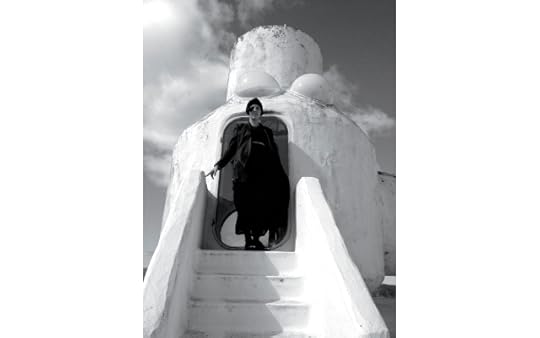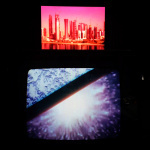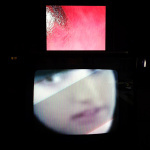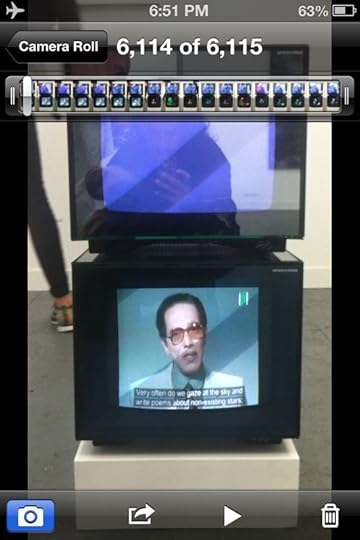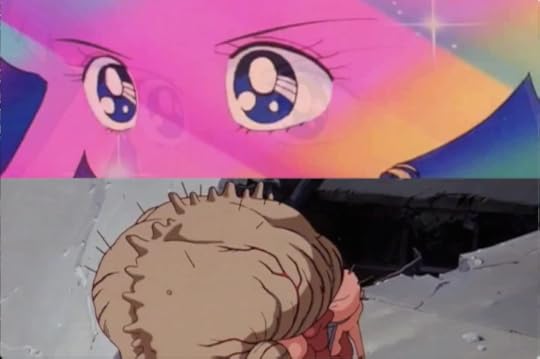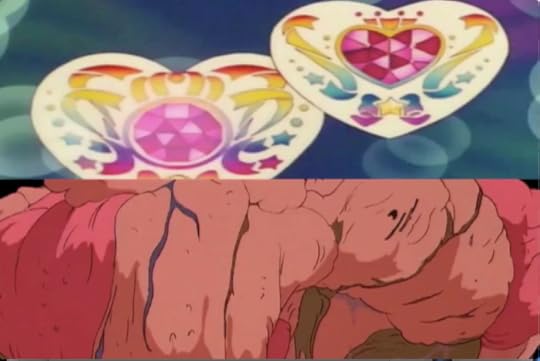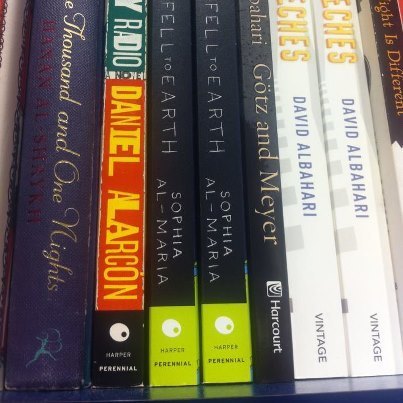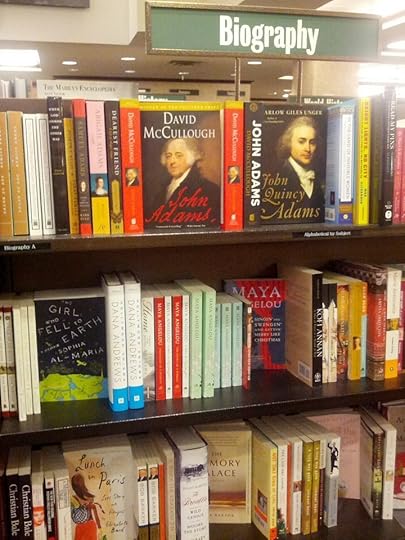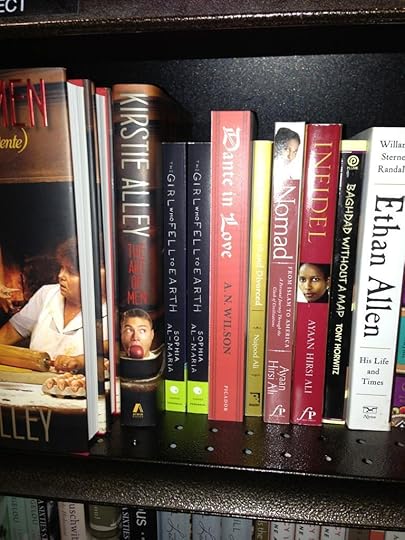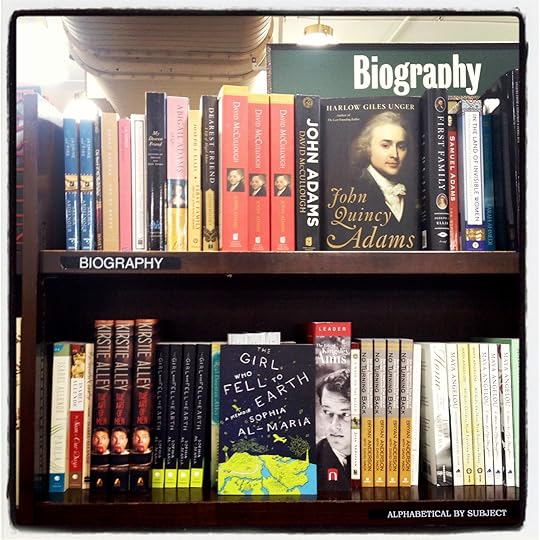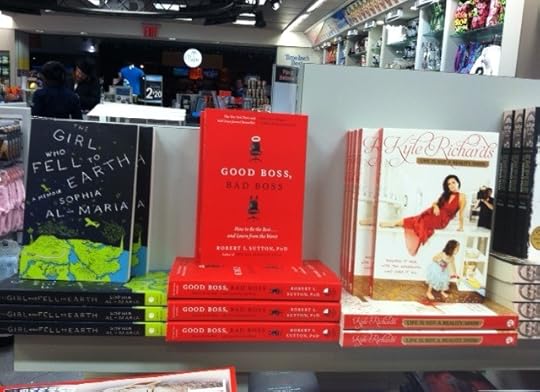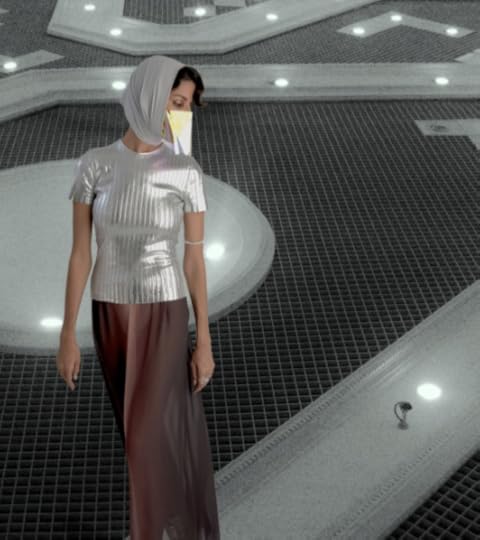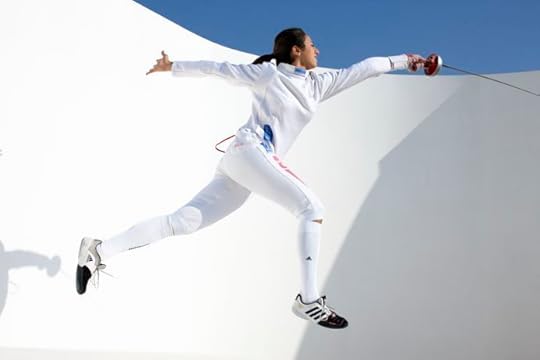Sophia Al-Maria's Blog, page 3
June 4, 2014
Serpentine Bridge Commission: KING TIDE
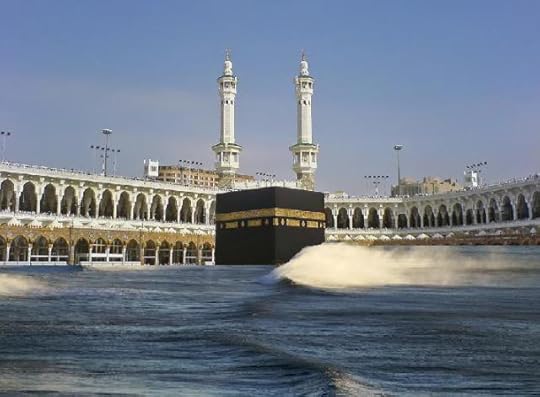 image courtesy of a website called “winds of jihad”
image courtesy of a website called “winds of jihad”
Hans Ulrich Obrist likes to ask all his interviewees about their great unmade – basically, “What project do you wish to do but have never been able to?”
Mine would not be a project. It would have been a summons. To have been able to take Mr. J.G. Ballard to the Gulf before he died. To have shown him all his prophesies wrought real.
But back to the point of this post: He imagined London under water in The Drowned World.
And cogitating on this vision is the inspiration for my apocalyptic contribution to the Serpentine’s Bridge Commission this year.
It is a short piece of fiction. Please do listen. I hope you find it frightening.
I call it: King Tide.
Reading courtesy of Sangeeta, the automated siri voice in your OS X machines.
You can listen and download other audio texts by some brilliant authors here. Including Chimamanda Ngozi Adichie, Luisa Geisler, Valeria Luiselli, Natasha Soobramanien and many others.
And for the sake of those who might be unable to listen, I’ve posted the text below as well.
By Sophia Al-Maria
The following sound fossil has been exhumed from the future, somewhere in the vicinity of latitude 51° longitude zero.
When we began recovering information from the time-mines, in the form of temporal core-samples, we made a discovery:
all matter is malleable, and in it time can be recorded,
Just as trees keep track of the seasons, diamonds trap the images of their surroundings and even stone can be a tape.
The question is how to best interpret it.
In the case of this sample, it has been sonified, in order to hear the post mordayal sounds of that which is coming.
In the popular askings and graspings of our time, there is one particular known:
our climate cassandras say it again and again:
the king tide is coming!
So stop where you are.
Close your eyes.
And from the lifeboat of now, look down into the depths and see what becomes of this city, our lovely Londinium, our beloved Babylondon,
See, how she has turned into a watery shadow.
Her triumphs and follies the stuff of unsung epics, un spoken legends, wordless poems floating in a manless time.
This place is remnant of no body’s memory, it is the environs of indifferent species, outgrown giga fauna expanding beneath a swelling sun.
Look down, and see the road you are on now.
It is refracted many leagues beneath the surface, Its twists of silver concrete beneath a flickering current. It’s almost pretty. Like many of the roads it is graceful but broken.
A sputter instead of a slide.
Now let us take our vessel under the water, and you will see the bridges of London, great spans stretching over serene gullies. The freshwater Thames now a tropical haze of blue green saline.
Nektonic lurkers watch you from beyond your sight, you progress to the east.
Eventually you come to the white giants of Essex, pride of what was once the largest off-shore windfarm in the world. You paddle through the spokes of the two-hundred and seventine turbines – guardians of an estuary that is now an underwater canyon.
Still brilliant white in the marine half-light, you watch them as they turn, soft and slow and webbed in plastic, They stand as Ironic monuments to the pathetic efforts of our time.
After some while tilting at the windmills, you arrive at a plateau.
It was once a car park for taxi cabs. Now it is a forest of greasy kalp.
Swaying in the circulatory system of the sea. Each vehicle squats like a sprouting bulb, at the base of long thin stems of spilt oil.
You see jellyfish the color of antifreeze.
They make aimless rounds, spreading their larva in an uneven whorl.
These cluster around the clutch and pedals, nurseries in the burst ribcage of a cab driver.
At the abracksial tip of every leaking stamen there is a slick of rainbow grease, toxic pollen for the fishes to collect.
This petro forest, and the tainted jellyfish who haunt it, are a cruel reminder of the jetsam we did not jettison in time. You leave the grove in sorrow.
But know this, right after the deluge – it was human bodies that drifted like so much plankton.
The city became feed for our inheritors, meek organisms of the late anthropicene, blooms of flesh-eating bacteria, aquatic mega rats and mutant roaches now at home in water.
The inhabitants of drowned councils, and sunken tower blocks became inhalable intake, for Shard sized basking sharks.
London, perhaps the most lush city fall on Terra, has a radiant secret at its centre.
Decades-long ecosystems that once sprung up around a whale fall, now thrive for centuries on entire metropolitan sprawls.
Osedax, those bone-eating zombie worms of the abyssal zone, now outsize Big Ben, replacing his rhythm with the billowing pulse of their gigantic gills.
As you descend again at 51 by 0 degrees, you see something glinting, like a beacon.
And you hear it too. Tiny. Warm. Familiar.
///
There is something breathing beneath the bristle worms. A mammal trapped. Somewhere beyond the hagfish trawling the murk.
And it
is the sonic core of this sample.
And it
is beating.
Sending a warning.
As you draw nearer you begin to understand it is a secret.
A secret you always knew.
One that whispers to you.
the absolution of re-absorption.
the relief of extinction.
the beating heart at the very centre of time.
You knock on its crystal walls. It is hollow.
You wipe the algae scum from the window to see what life is left.
///
It’s a projection,
a trick,
a holograph cast inside this glass casket,
sunken at the bottom of the post-historic sea.
The core of this fossil is you.
On this day.
At this moment.
In this place.
Heart beating.
Blood coursing.
Oxygen breathing.
But you are not alive.
You, are the illusion of human life.
A homosapian asleep without dreams.
Like you are waiting.
Waiting.
But for what…
For time’s first kiss…
for some caress that isn’t coming?
Open your eyes,
Open them,
Now.


May 4, 2014
TEXT OF TALK IN TANK
This blog so neglected. But for my wreckords, there is this >>>
VIEW INTERVIEW IN SITU
Text by Shumon Basar (TANK YOU SHU!)
Sci-fi Wahabi may or may not be the alter ego of Sophia Al Maria. If so, it’s akin to the human disguise David Bowie’s alien took (as Thomas Jerome Newton) in the 1976 film The Man Who Fell to Earth. The theory gains traction when you discover that Al Maria called her first book The Girl Who Fell to Earth. Described in the New York Times as “a visceral exploration” and “an original outlook on ancient ground”, this memoir switches between America, Qatar, Egypt and outer space. Al Maria’s childhood in Doha – the newest hot spot on the Gulf’s coastline – laid the foundations for her concept of “Gulf futurism”, in which past, present, desert and skyscraper hook up in an infernal Ballardian tragicomedy (all gold-plated, of course). Al Maria also makes art, writes screenplays and is about to direct her first feature film. She telepathed the following answers to Shumon Basar, who received them through a lesser known worm-hole called the 21st century.
Shumon Basar: Your alter ego, Sci-Fi Wahabi, has time-travelled from the Gulf in 2099 to visit you today. What does she tell you? Is it good news or bad?
Sophia Al Maria: The Anthropocene mass extinction event is ON! In a spectacular cascade of ecological disaster! Try to survive long enough to see your enemies fall.
SB: You’re credited with coining the term “Gulf futurism”, which has made its way to the attention of Bruce Sterling, no less. The modern Gulf region is young, measurable in single-digit decades. Is an obsession with the future inversely related to age?
SAM: Gulf futurism is bi-partite. You have the phrase as a way to sum up the obvious, ie the exposés and observation towers and architectural renderings and bizarrely naïve master-planning, etc. But then it is also intended to be a term that might open up conversation about what is happening to our bodies, our minds and our land in the process of being dunked into a hyper-consumerist capitalist machine. It’s happening everywhere. I just think it has happened with bolder, more contrasting strokes in the Gulf, and so it is an interesting perch from which to observe the changes the future demands of us.
SB: What is it about sci-fi that seems to resonate with Dubai or Doha? And are there traditions of indigenous sci-fi, literary or otherwise, that you feel you’re continuing?
SAM: Mars, the moon – both desert landscapes, even if they’re tinted in different colours… So there’s something deep in the Western mythology of science fiction that rhymes with our landscape. From Méliès’ A Trip to the Moon to Tatooine in Star Wars, Dune obviously: the desert is cinematically the ideal location for SF. Cheap and alien. With regard to SF and fantasy lit in the region, there are lots of things happening now, from dystopic novels coming out of Egypt to hard SF in the Emirates and Saudi. Most of the stories my father told me as a child, the ones my cousins and I exchanged as teenage girls, the paranormal mobile phone videos I’ve found as an adult – all full of fantastical and unexplainable phenomena. There
is more than Fox Mulder’s desire to believe. People
just do.
SB: You once told me that the two things that liberated Gulfi youth from the past to the present-future were the mobile phone and the car. Can you explain why?
SAM: If you think of history as something defined by the laws of physics, and the discovery of gas and oil wealth as a sort of event horizon from which there is no going back… what’s happened is a wormhole stargate mindfuck. The pressure is intense – culturally, politically, environmentally. So of course, as in any oppressive situation, cracks form and energy is released. It’s simple. Communication + mobility = escape velocity. If only for a brief moment of falling in love or being flung from a wreck.
SB: Your “fiction-memoir” The Girl Who Fell To Earth has been received well internationally. What kind of reaction has it had within Qatar among the generation who might identify with the book’s journeying themes?
SAM: I had a bit of a Hester Prynne moment in Doha when I went to speak to Northwestern University Qatar students about the book. Many were livid. I got some who were furious about the personal content but there were others who took more umbrage at the fact that I depicted poverty in the local population. One girl asserted that the book was “spit in the face of Qatar”. Obviously, I disagree. That said, the negative was offset by all the amazing ones who were chiming with it, so I was saved from the stake.
SB: Qasida is the title of a fantasy saga you’d like to write set in the Gulf. Will it be populated by fantastical beings, landscapes, or both?
SAM: All of the above. It’s based on pre-Islamic poetry and that is full of wild chimeras and hallucinatory journeys. Ghouls and gamblers and brigands and battles.
SB: You studied in Cairo, and now you’re planning a feature film set there called Beretta, in the mould of a female rape-revenge. Can you imagine things ever getting better there for women, especially given that since 2011, it seems to have got worse?
SAM: I don’t like to imagine there is anywhere to go but up from here. It has got dark, to be sure. However, I have to say that this aggression is not new, it’s just more visible. A decade ago, in Cairo, I was dragged from a moving vehicle by my hair and neck and breasts and had my clothes shredded off by a mob of men, and it was in celebration, not anger! Zamalek had beat Ahli. Big deal. Let’s try and rape a girl. Natural, right? The only difference is that the fear of consequences is now gone. And so things are worse, particularly in the safety of an anonymous crowd. That’s why I’m making Beretta. A girl gets a gun and goes on a misandristic killing spree around the city. Some might worry that it comes off as a fascist feminist film. I have the ultimate respect for those who are on the ground physically extracting people from these situations or working in communities to change local reactions. But I’m tired of people “exploring” the “issues” in cinema. I want to make a statement. That is fun to watch. There’s too much good taste in Arabic cinema right now. I just want a little action daydream – some fantasy justice for women in the trenches of the streets.
SB: As a young scriptwriter and director, do you feel optimistic, in the third century of cinema, that there’s scope for newness to be made and received? Do you see the possibilities broaden or narrow?
SAM: As a format, I think the 90-minute-plus movie is withering on the vine. I am optimistic about other narrative forms, though – all the inheritors of cinema’s mantle. TV is the new novel, games are the new movies, even reading comics has changed massively for me now with all the various readers for iPads. All that excites me. Storytelling has been straining at its seams for so long and something new has got to synthesise soon.
SB: If the internet shut down for a year, with due warning beforehand, what do you think would happen to life on Earth?
SAM: Depends where. Lots of places wouldn’t notice. Maybe in some places things would go back to how they were 20-odd years ago without much hitch. Regression is easy, after all. But then look what happened in Egypt when the net was blacked out. In urban places I suspect it would be an exciting time.
SB: You’ve talked about the relationship between media and flesh, and cite Cronenberg’s 1983 film Videodrome, where TV fuses with bodies, as an influence. What about the internet and flesh? Are they related, or is the “new new flesh” the total abandonment of skin and bones?
SAM: This “new new flesh” probably won’t be in the Videodrome/Tetsuo sense. I figure we are just terraforming the planet, like bacteria around a volcanic vent, or mangroves or whatever, for that which is coming. The fleshless ones. We’re doing this by building the internet – creating the perfect conditions for some new kind of lifeform that will someday just wake up – like a code kraken from the depths. As we build out and fill the internet, an intelligence will undoubtedly emerge. I think it’s inevitable that we’re building all this for some next-level life.
SB: If you were given the choice to always be happy and never feel sad, would you accept the offer?
SAM: What are you, a genie? Wishing for happiness forever must have a terrible catch attached. Hidden fairy-tale fees. Perma-joy sounds like the ultimate demented state. Anyway, I don’t trust happy people. They’re not paying enough attention.


December 22, 2013
SIGN CRIMES/ROAD KILL & a repost of The Temple of Fashion
The following is Joyce Nelson reading Victor Gruen the right act. Nevermind the dated references. Read if you have ever been in a mall, have just been in a mall, or are perhaps in one right now.
The Temple of Fashion is an essay published originally in 1991 although I can’t find where it was originally published.
I could only find it online on reocities (“salvaged from the ashes of geocities”) here and because the book I found it in is fairly rare and therefore expensive - I figured it is overdue for reposting.
If you can afford it, get your paws on the book Sign Crimes/Road Kill. Required reading 2014! I picked it up in Left Bank Books, Seattle. Judging by the cover (a Richard Slye photomontage) it could turn out to be my favourite ‘text’ of all time. I’d never heard about Joyce Nelson before yesterday. Anyone else have infos?
From what I am gleaning most of these essays are on an a 20-30-year-prescience-curve. She’s writing in the 70s, 80s & 90s about media culture being a delivery system of us to corporations and of the effect of consumerism on the environment ~ etc. I just go into a full existential swoon of FTW.
So for some of Nelson’s puzzle-perfect thoughts on how malls are horizontal cathedrals of worship, scroll down. You’ll never enter a changing room without wondering who is taking your confession again.
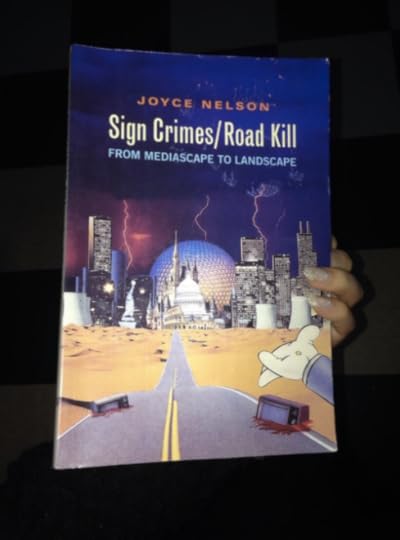
THE TEMPLE OF FASHION
Essay from part II. Mindscape of Sign Crimes/Road Kill
The act of acquiring has taken the place of all other actions, the sense of having has obliterated all other senses,” the British art critic and cultural historian John Berger observed in his 1972 book Ways of Seeing . By the mid-1970s, acquisition has achieved the status of a new religion in the West. The appearance of a new advertising buzz-word, spirit, was a clear signal of this development.
Once Coca-Cola had merely claimed to add “life” to our lives. Now everything from a cola through a department store and a hotel chain to a fashion designer began to make even bolder assertions. In slogans such as “the Pepsi Spirit,” “Simpson’s Spirit,” “the Spirit of Hyatt,” and Yves Saint-Laurent’s “New Spirit of Masculinity,” advertisers proclaimed the new religion of buying. More recently, the world soul has enter the advertising lexicon as another religious additive to enhance acquisition.
In such a context, shopping malls have become the cathedrals of our time: vast horizontal Gothic places of worship that draw the faithful together in communal rites central to the new religion. While the Prime Movers in this religion are the TV God and its consort, the advertising industry, the shopping cathedrals are themselves temples of technomagic where steps move effortlessly beneath one’s feet, doors open automatically, celestial Muzak hymns permeate the atmosphere, and the wave of a credit card completes the sacred transaction. Isolated from the mundane reality of urban existence, the shopping mall is sacred space, climate-controlled the patrolled, devoted to the ease of acquisition: the meaning of life in the postwar West.
This religion has evolved its own holy days (such as Boxing Day solstice) and holy seasons (Back-To-School octave). It also has its important sites of pilgrimage (in Canada, the West Edmonton Mall and Toronto’s Eaton Centre), although every North American city has its lesser malls where the same litany of brand names holds out the promise of salvation. Nevertheless, this is a religion in which both faith and good words are necessary. This facet of the religion is nowhere more apparent than in the domain of Fashion, whose side chapels in each shopping cathedral remind us that last season’s profession of faith is up for renewal.
According to the arcane hermeneutics of the Fashion Bible, one risks damnation by last year’s colour or the slightest oversight of tie, lapel, or faux nail. Thus, the Gospels according to Armani and Alfred Sung, Ralph Lauren and Christian Dior are continually being reinterpreted for our edification and enlightenment. While slogans such as Calvin Klein’s “Eternity for Men” and Alfred Sung’s “Timeless” collection evoke an eschatological logical promise signifying the end-time of shopping, it is a central tenet within the religion (and certainly dogma in Fashion that our indulgences are never plenary. “shop Till You Drop” is the vulgar — but correct — grasp of this aspect of consumer theology.
Fortunately, the high priests of Fashion (particularly the college of ecclesiastics gathered at Women’s Wear Daily) continually disseminate guidance on each chapter and verse of the Fashion Bible. Their perennial lists of “Best Dressed” and “Worst Dressed” remind us that even those not banished to the purgatory of obscurity risk hellfire by sinning against Fashion commandments that are perpetually under revision.
For this reason, there exists a wealth of inspirational literature and illustrated texts to assist us on our salvific efforts. Vogue, esquire, Gentleman’s Quarterly, and Flare provide not only the necessary iconography for the consumer aspirant’s meditation but also details on those Fashion sins (venial and mortal) that can impede our progress. the pages of such inspirational texts also offer devotional readings on the lives of the Fashion saints: popular saints of the past like St. Marilyn and St. James Dean: current beatified exemplars like Madonna and Billy Idol; and our living martyr to Fashion, Elizabeth Taylor. But such devotional reading and contemplation are only preparations for the greater liturgies of the mall.
Window shopping brings the congregation into closer proximity to the Fashion priesthood and the means of redemption, but before we enter any of the mall’s side chapels there is usually an impressive form of statuary to mediate our passage. Modern mannequins have evolved with the mall itself, becoming increasingly elaborate, detailed, and even startling in their effect.
The old form of mannequin (like the old form of storefront) was, for the most part, simply uninspiring,; its wig askew, its coiffure outmoded, its facial expression vague and nondescript, its limbs akimbo or missing, its stand ridiculous or pathetic. Only by the greatest leap of faith could the consumer attain the proper buying spirit through a glance at such a guardian of the portals.
The new mannequins, on the other hand, are appropriate statuary the impressive cathedrals that surround them. Figures of anatomical perfection, these statues with their erect nipples, painted fingernails, detailed eye makeup, stunning hairdos, high cheekbones, and long sinewy legs remind us at a glance just what it is that we, as mundane Fashion consumers, aspire to. While the male statuary is somewhere less intimidating, it too bespeaks the contemporary codes of the Fashion cult: chiselled jaws, muscled ut sleek torsos, long-legged figures of power.
But it is the faces of the new statuary that are most significant in their religious function: aloof, haughty, disdaining, beyond appeal. Inspiring neither solace nor prayer, these figures at the portals are port of the shrines of envy and are meant to inspire a certain measure of fear.
To gaze at one of these detailed figures is an oddly unsettling experience (though in trough they are meant to be only glimpsed in passing). Typically, the statue is posed so that its haughty gaze is directed above or away from us, though we were quite obviously beneath contempt. At the same time, the statue’s fetish of forever perfect and hyperrealistic detail cruelly reminds us of our own imperfections. Whether we are fully conscious of the effect or not, we enter the chapels of Fashion subtly diminished and suitably envious.
Such feelings enhance the redemptive power of the array of apparel within. Each article of clothing promises to increase our status and transform us in turn into objects of envy, in our own eyes and the accretion of socially envious connotations, religiosity, and sacred trust. This veneer laid upon mere cloth y the high priests of Fashion is necessary for passing through the challenging ritual of the changing room.
Within this confessional enclosure, one is the confronted by the attendant mirror revealing all the sins of the flesh that mar one’s progress: the cellulite thighs, the body hair, the paunch, the girth, the less-than-perfect contours reminding us that the spirit is willing but the flesh is weak. Making promises to join the modern-day flagellantes in daily workout routine, we proceed to put on the desired article of clothing that promises to miraculously transform our lives.
The moment of beholding ourselves dressed in the desired brand name has also been prefigured and prepared by the statue at the chapel’s portal. Like it, we must harden our gaze overlook that small inner voice of protest about ht price, and focus on the future vision of ourselves as the envied possessor of this article of apparel that most of the faithful will have already seen ( and desired ) in the inspirational fashion texts. Wee know that the envious others will recognize at a glance that we have joined the elect.
Where once it was possible for the faithful to identify, from a momentary glimpse, the habit of a Franciscan friar or Benedictine nun, so now the congregation is steeped in the familiar cut and style of various designer looks. Indeed, one can dress oneself entirely from head to foot in Ralph Lauren or YSL, Lee or esprit. As the most dedicated of the Fashion faithful realize, it is the brand, not the cloth, that clothes us. So the slogan says, “Life’s Necessities: Food, Shelter and Lee Jeans.”
As we become the objects of our own devotion, the high point in the shopping mall liturgy approaches: the transforming ritual of the credit card. Through its instantaneous magic, we momentarily redeem ourselves and enter the ecstasy of acquisition that is fundamental to the new religion. The technomagic of the credit card is in keeping with the whole aura of effortlessness that pervades the mall. Indeed, the many objects on display seem magically conjured out of nothing to fulfill the promise of advertising images’ sleight-of-hand. For all intents and purposes, these millions of objects seems to have no origin, no history of labour and creation. Only the shopping agnostic would think to consider such questions as: who made these things, and under what conditions?
For example, most of our brand-name clothing is made by Third Would garment workers, primarily women, who are grossly underpaid and exploited by North American contractors paying as little as ten cents an hour for the lobour. In the export-processing zones of the Philippines, Thailand, Hong Kong, Mexico, Indonesia, and dozens of other countries, non-unionized workers typically work sixteen hour days for the most meagre of wages, assembling the host of products that fill our malls. Even canada’s high priest of Fashion, Alfred Sung, employs Hong Kong labour to work at a fraction of Canadian wages in sewing the apparel of the elect.
But the religion of acquisition excludes any knowledge of the actual work that goes into the making of our products. For most of the consumer faithful, these millions of objects simply appear “as seen on TV” or in the photo magazines: as though untouched by human hands, as though the image itself (like an idea in the mind of God) had somehow spawned its progeny, as it were, “in the flesh.” Like Doubting Thomases, we touch and buy their tangibility to reaffirm our faith. Thus, while some have dubbed this new religion the Church of perpetual Indulgence, it may more accurately be described as the Church of the Wholly Innocent: wilfully apolitical, purposely unknowing, steeped in the mystification and technomagic of our time.
~ Joyce Nelson, 1991


November 3, 2013
Poison Nostalgia + Panos Cosmatos
A few years back I wrote this about a weird film I’d seen by chance in Qatar via a friend with fingers in all the festival pies. Beyond the Black Rainbow blew my tiny mind. Still does. The director, Panos Cosmatos had wanted the essay to be included with the DVD on release but alas, a pamphlet extra was out of the budget. And so, to the blog she goes. Out of date and off my drive.
If you haven’t, DO get the BluRay and find a player to watch it on – it’s worth it.
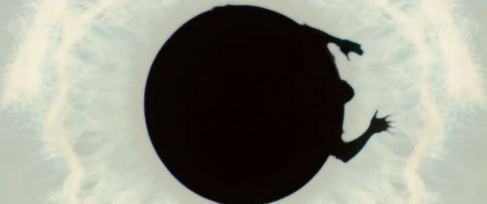
“Beyond the Black Rainbow is the best example of whatever the hell it is.” – Cole Abaius – Film School Rejects
Panos Cosmatos ate the whole box of crayons.
And like the nose-picking weird kids in the corner with a mouth full of wax, no one seems to know quite what to make of his first feature Beyond the Black Rainbow. Yet.
The film is an immersion tank of late ‘70s/early ‘80s sci-fi horror and manages to deliver a sensory assault that is both fresh and deeply buried in that very different time – the foreign country that is pre-digital North America.
Remember the crunch of pressing play on a tape deck? The tiny burn of a cigarette in an airtight room? The thundery clap of turning a thick page in a big book? Were these the sounds of 1983? It certainly feels that way. It also looks that way, the texture of skin before mini-facials were available at every mall, the streaky wood of elevator panelling, the transparent yellowing of plastic spectacle frames. It is absolutely sonorous with colours for chromophiles – there may as well have been a Super Wurlitzer pumping in the wings. The actors are all mic’d in extreme close-up. You can practically taste the dialogue in your own mouth. And underneath all this is a control room filled with a crushing dread as invisible as the mortal dangers of The Zone.
At the centre of this set is the Masonic pyramidal node that appears to be the engine of the institute. For a moment, while the sound pulses, you fear your skull might explode. It happens a lot. The crypto-plot is only ever inferred – you emerge from Beyond the Black Rainbow feeling as though you have just slaked your pineal eye.
And yet despite the unique hypnogogic power of this film, the majority of Beyond the Black Rainbow commentary is prefaced by cult hounds picking out all the films it has borrowed from. Comment threads and Q&As turn into scratch-posts for alpha geeks to namecheck the influences, references and lineage of Cosmatos’ vision. To them it is a patchwork of their favourites – Dark Star! THX 1138! Phase IV! Scanners! Blue Sunshine!
Still, for all the ways this film signifies an entire canon of cult cinema to Fantastic Fest-ers. Beyond the Black Rainbow is not born from the same masturbatory world of the fan boys who have been its early champions.
Yes, Cosmatos gives the heroes of weird film due recognition. But he says that the movie is “looking at the past through more of an an acerbic lens.” And that it was a project that began nostalgic and ended up becoming infused with an ambivalence, he called in one interview a “darkness” towards his past.
Far from wallowing in the post 2001: A Space Odyssey wake of bright white-lit spaceships and noodly Moog symphonica, Beyond the Black Rainbow evolves from its source material. It is categorically not an homage, nor is it just a cleverly spliced compound of Ta(rkovsky), Ku(brick) and Ar(gento). Like many before him Cosmatos has committed the auteur periodic table to memory. And then, instead of turning it into an OCD rapid run-down of all the elements, he has achieved a seriously stunning feat of invention, a sort of cine-alchemy.
According to his director’s statement, Cosmatos’ early experiences with cult cinema were of its contraband nature. This was back when you had to wait for your parents to leave the house to watch anything mildly inappropriate. The days when renting Faces of Death required an age waiver and, for those so inclined, you couldn’t find photos of real corpses on rotten.com. Although Cosmatos wasn’t allowed to watch these films, they affected him as if he had. “Mesmerised by the lurid box covers and the vivid descriptions” on VHS horror films, Cosmatos would “imagine, in great detail, my own versions of these movies without ever having seen them.”
This kind of longing and imaginative projection of verboten films is all but over now when even the most shocking is available with a few torrent flourishes. If anything, Beyond the Black Rainbow is a testament to parental restriction – conceptualised as one of young Cosmatos’ “imagined movies” – beginning with a VHS slipcase (see arboria.org) and ending with a full-blown narrative more evocative of a time and imaginary place than all the Saturn 5s and Videodromes combined.
Now for some spoilers!
The inferred plot is this: In the 1960s, Doctor Mercurio Arboria founded a techno cult of “benign pharmacology” and “energy sculpting” promising inductees “eternity through technology.” This chunk of exposition is imparted in an introductory video, all dewy leaves and prismatic lens flares reminiscent of the language, ie “realising human potentialities” of Millbrook-style rogue-experimentation. The story begins in 1983. Doctor Arboria’s protégé, Barry Nyle, now captains the institute. It is essentially a ghost ship populated only by an unnamed orderly who resembles Nurse Ratched in sweatpants and his star patient, a Ringu-styled girl with stringy black hair and a nightie. She is called Elena. Doctor Barry Nyle is familiar, like an “evil Carl Sagan,” as film critic Oscar Moralde pointed out perfectly of the standard-issue turtleneck and sports jacket ensemble Nyle wears throughout. He is all sinewy malice, skin barely covering the twitching muscles of his face. Elena who has been born into and imprisoned inside the airtight world of the institute is a sort of feral child. All she knows of the outside world is from the TV – car explosions and cartoons. When she requests the chance to see her father, Dr Arboria, Nyle denies her, insisting “these times are of great uncertainty,” and that she isn’t well enough.
“The mood of the film is my memory of how the late ‘70s and early ‘80s felt to me,” says Cosmatos. “Both the reality and the fantasy world of the pop culture I would immerse myself in. In making it, I was trying to grasp something intangible. It’s a nostalgic movie, but it’s a poisoned nostalgia.”
If the Rodriguez compulsion is to re-enact the feeling of grind house films with track-marked celluloid or recycle video nasties with VHS scramble, then Cosmatos is at the opposite end of the cult-film spectrum, swallowing the films not just as an aesthetic. And although there is no doubt people will continue to draw comparisons with Jodorowsky, et al, Cosmatos has come out with something that is totally unlike the films he consumed.
Doctor Arboria is reminiscent of pathfinders like Huxley and Buckminster Fuller – all grand hallucinations of the future. Doctor Nyle is the boomer, adopting psychedelics and then promptly destroying them for everyone else. Then finally, there is Elena, born into an entirely constructed environment, weaned on TV and airborne drugs, inheriting a fucked-up world in its twilight. She is the progeny of Arboria, imprisoned by Nyle and even if she were to escape the institutional matrix of the Arboria institute, as a representative of generation X she would be unable to cope outside.
Some have posited that the film is in some way a tract against the “me generation” and their destruction of a utopian possibility through selfishness and consumerism. Indeed Cosmatos has spoken of his cynical attitude towards baby boomers who have “gotten away with murder.” Perhaps this is verging too far into Adam Curtis territory (turning vague hints into broad historical strokes) but this idea is hinted at by the nods to specific dates in the film such as 1966, the year all scientific experimentation with LSD was made illegal by the US government. In this sequence we have an acid trip and loss of innocence which brings us to the mournful centrepiece of the film – the death-by-overdose of Doctor Arboria, cult-leader turned junky, under the administration of his once protégé Doctor Nyle. This mad scientist is drawn half in, half out of life on a painless heroin holiday. He reclines alone in a dark room, accompanied only by syringes and the cooing female voice on a Hawaiian travel ad, like the, “warm, richly coloured, infinitely friendly world of soma-holiday” in Huxley’s Brave New World. In this projection, the Haleakala crater plays backdrop to the gentle death of Doctor Arboria and sharp awakening of Elena. And in one of the most stunning scenes of the film, Doctor Arboria’s blue-lit face is mashed with the red-tinted Elena’s while his tropical sunset gives way to her explosive sunrise. With the old guard dead, the youthful Elena, the only character in the film undusted by layers of age-inducing make-up, awakens from a haze. Now is the time for escape. She timidly makes her ascent into the outside world of trees and swamp and insects, pawing at the uneven dirt before stepping on to it like a lab beagle experiencing grass for the first time. She ends up at the border of suburbia, unsure of what to do. Whatever happens to Elena is left open. It is a conclusion that has left viewers both confounded and annoyed.
First viewing of Beyond the Black Rainbow is like coveting a chance to watch one of those previously mentioned R-rated films, like, say, Heavy Metal. You stare long and deep into the cover, all embossed lettering, fantastic beasts and greased-up breasts
Then you get the chance to watch it at a friend’s house and you find that actually, the rotoscoped He-men and teradactyles kindof suck. Now the shiny slipcase is discarded, disappointment descends followed by immediate nostalgia for your imagined version of the film, the one you had come up with before you went and ruined it for yourself. Despite the packaging, this is where Beyond the Black Rainbow is nothing like the film you were never allowed to watch – far from disappointing, it is everything you ever dreamed of.
arboria.org


October 31, 2013
Between Distant Bodies No. 1 + No. 2

This post is about Between Distant Bodies. The beginning of an infinite video that showed at Frieze in London a few weeks back.
The idea for the piece began to coagulesce (not a word but should be) sometime in the last year around ideas of time travel in the Gulf and how transience, transition, transgression and a xillion other ‘trans’ biproducts that are formed out of such an event.
You see, it has become increasingly clear to me that the inhabitants of the Gulf region in the last half-century have time travelled. And I mean this quite literally.
The problem is that the extreme effects of the hyper-pressure involved in this process are only visible through certain lenses and over a certain timespan. Whether or not you can see it, strange changes are happening to the bodies and the souls of people in the Gulf right now.
If you dig through this blog (which I don’t recommend) you’ll see most of my thinking around the Gulf is predicated on the idea that a stargate or wormhole opened there with the discovery of oil and so I often end up thinking about my erstwhile home from a disembodied, alien perspective.
That’s where these videos come in.
The figures in Between Distant Bodies are like Dave in 2001 crashing through the stargate en route to becoming the Starchild.
They are mostly strangers to me from found footage but some of my own. They all exist or existed or will exist in that space/place now – all born into the hyper-accelerated situation of existenz in the Gulf states and then reborn.
Like light bending at 299,792,458 metres per second - they warp. And so in the videos I used the frame as the main integer and literally time-folded them into an intricate braid of transition and transgression (sexual, temporal and otherwise) in an endless diptyched loop.
The piece sold to a mysterious collector so I don’t know if I’ll ever be able to show you online. But for what it’s worth:
In one video a girl sneaks an illicit kiss in the back of a pickup. In another, a femme boy dresses up in his boyfriend’s police uniform and goes for a drive. There is much flyover footage of cities and deserts and even some Doctor Mustafa Saeed.
A pic of the installed version with 2 Brionvega mirror cube cathode ray tubes in The Third Line Gallery booth at Frieze, London 2013 as taken by the only Abdullah Al-Mutairi.
An uber-special thanks is owed to @peterwebber for literally producing the thing, obviously to the ladies of Third Line, to Anna Lena Vaney in Paris who lent me her edit suite and to Letitia Stefanescu and Fritz the cat in Bucharest who saved me in an emergency.


July 9, 2013
Transformers @ FORMAT 3: REALITY
The following is a version of a talk, a sort of refutation of the dominant understanding of the phrase Gulf Futurism I gave at FORMAT 3: ‘the live magazine’ at the Architectural Association last week. Our topic: REALITY (allcaps!)
The series is ongoing throughout the month. If you are in London. GO!
It was born of two pieces I’d written before, muddled/smashed/ground together into a vague argument about how Gulf Futurism isn’t about the cities and the Syd Meadiness but about our bodily changes, specifically the difference between how boys and girls are transforming.
The top pretty soldier cosmic orgasm is from Naoko Takeuchi’s Sailor Moon and on the layer below we have Katsuhiro Otomo’s ballistic body explosion of Tetsuo turning into Akira.
This was playing throughout the talk.
The City
Somehow over the past decade, the before and after, that staple of Reality TV – has become the main mode of master planning in the Gulf. Everything is a fly through demonstrating the transformative possibilities of grand delusion.
I’m going to show you a quick animated clip created in 2011 for Qatar National Day.
The 2030 we time travel to is an arbitrary date, a sort of fantasy zero hour omnipresent in the national consciousness ever since the National Vision (aka cunning mas-ter plan) was announced under the leadership of very soon to be Emir Sheikh Tamim Bin Hamad Al Thani. This was back in 2008 when the powers that be quite literally drew a road map to take us as a people into the future.
If you follow the directions of this government funded animation, all we have to do is turn left at the skyscraper grove, pass through the giant flaming astrolabe and straight on until morning when the transformation of our city will be complete.
This hyperbolic little ditty should be shelved alongside the suite of Qatar 2022 World Cup bid films and a deep archive of unrealizable fly-throughs gathering dust in the municipal planning offices of the region.
At first it was due to the abundance of such material that I felt a term like ‘Gulf Futurism’ was necessary as a starting point to ask questions of the pretty juggernaut of master planning and of the SF-inspired idealologies currently lifting off in the Gulf.
However when I use the term Gulf Futurism, it is generally assumed that I am referring to the sanitary Syd Mead-styled urban visions of our cities – the surface level gulf visible to the quippy NYT journalists who sache in and out on official business. The phrase is multifaceted and many pronged.
As with all collective visions of utopia, an immergent dystopia lies in direct parallel just out of sight. I want to put aside for now the obvious pecking-points of the blood spilled in Bahrain and Saudi and the line-up of laborers being fed to the machine of our Metropoli and the ever-excellarating environmental catastrophe. Instead today I’ll focus on what is happening to us bodily, what paralysis is being caused by this omnipresent projection of ‘tomorrowland’ and what new flesh is being forged in the hyper pressurized combination of extreme wealth, imbittered islam and magical thinking.
The unfolding story of Gulf Futurism is a strange mitosis happening out of the sight of the master planners and architects: it’s the splitting of worlds: of then and later, us and them, real and unreal.
But today I’ll focus in on the separation of his and hers.
The following are two isolated pictures of metamorphosis – human scaled entry points into an epically proportioned and perplexing situation.
The Girl
The first ‘mall’ in Doha, Qatar was called, appropriately enough: “The Mall”.
The Mall’s layout conforms to the blueprint of malls the world over: there are no outward facing windows against which one could measure geographic location, instead only skylights to allow in calming natural light.
Aside from the call-to-prayer the sound track consists of non-offensive music tinkling through the temperature-controlled air, time slows and the soothing effects of the Gruen transfer set in.
To clarify: “In shopping-mall design, the Gruen transfer is the moment when consumers enter a shopping mall and, surrounded by an intentionally confusing layout, lose track of their original intentions. Consumers respond to “scripted disorientation” cues in the environment.”
I should mention that Victor Gruen disavowed such manipulative techniques. But the idea was too powerful and too lucrative to be kept in 2 dimensions. And so the mall both in concept and design is a spatial drug rendering the person who has entered into it (rather than taken it), helpless and impressionable in the face of desire.
Aside from forgetting what it was you came for, the transfer is marked by a slower walking pace.
So imagine if you will the following person milling the mall:
An 18 year old girl wearing a black abaya with her shala thrown up over her face. She is the beautiful daughter of a woman who at 18 wore bright calico jalabiyas with a gold nose ring and oiled braids displayed in the sun.
In sharp contrast to her mother’s liberty to roam, this modern daughter is only free to move within the hamster ball of the mall. When she wants to travel she changes the photographic wallpaper in her bedroom from an Alpine meadow to a tropical beach. And so – born into the consumerist pleasureland of shopping festivals and year-round tenzeelat – she spends erratically.
Wedding season arrives and with it her urge to refresh herself kicks into overdrive. She begins planning her power-princess transformations of color-coordinated fantasy. She choses a theme for each invitation matching her contact lenses with her poof with her slippers with her bedazzled BB cover. Her dresses are as elaborate as a carnival float. She choses turquoise satin and feathers, orange tulle
and gold bangles, leopard lycra and minx nails – all the while nursing the hope that soon she’ll be on the dais wearing her own holographic-glitter wedding dress – nestled in a fanfare of styrofoam swans.
The cost of these mall-fed fantasies has caused a pandemic in Qatar. Since the first mall opened the country has accrued an outrageous and unpayable personal debt exacerbated by the urban legend that someday the Emir will bail us out.
The Boy
Next we find ourselves in the fluorescent lit, air conditioned majlis of the typical Gulf household – a holding tank for young men too grown to loiter on their mothers’ side of the house and too young to drive the night streets yet.
Let us say this scene is middle class for the sake of average – the tacky luxury of Chinese product glints in every particle-board media cabinet and gilt tissue box holder. The boy lays sprawled on the floor, unmoving as a sloth unless a foot or an arm falls asleep.
The boy plays fantasy football on a plus-sized Plasma. His avatar darts around a spectacular virtual stadium whose design is based on the real one just meters from where he lays. Time shifts around him while he masticates wordless visual code. Maghreb prayer comes and goes, night falls, morning dawns, he remains in his spot like a beached whale. His parents were wiry framed, their teeth were white and strong from a diet of camel milk and miswak. His mother loved to run. But just 30 years of sedentary living has changed their progeny into a tribe of diabetic and obese youths whose bodies are atrophying around them.
These boys, who have no sense of time, or memory or history due to their sub- prime educations and supreme-sized lifestyles make up a generation.
The bittersweet poetics of desert amnesia and soul-travel like Mohamed’s Night Journey are all but lost on beings who have no idea what they’ve lost and who have little place in reality but the role of body-bound ward of the state.
At 15 this boy has a brain that is so hyper accelerated that his young bodies instinctually grasps for slowness, craves lethary. He spars virtually everyday but has never engaged in wrestling or horseplay.
His body expands physically as the intricate networks between gadgetry and flesh multiply, bursting through the folds of flesh. Colonized by his technology, this chubby, sexless, frontal lobe-heavy being is a Tetsuo iron boy. It is a painful transformation made tolerable only through the dope of the screen.
When he is old enough to drive, this boy will rebel against this idle wasting – raging upwards of 200 kph, jettisoning skull-first off his Kawasaki in a glittering show of shattered glass – final proof to his numbed body (and mourning family) that he was alive.


July 2, 2013
Ghostblog + Candid Cameras
Dear erstwhile readers,
I’d all but abandoned this blog after the publication of my first and possibly only book The Girl Who Fell To Earth came out last November.
The publication of a version of my own personal history had an implosive effect on me – a sort of retrograde desire to unspeak, unblog and unbiographize myself. But as everyone knows on the internet, you can’t unsend an email or unsee that snuff video or untag yourself on Facecrack when facial recognition bots exist. During the writing period I’d gone so Ouroboros on myself, I had to take a break from the navel gazing (of which this blog was a part) and do something random – in this case that was taking a job to write a screenplay about 19th century cannibals - but I digress.
Then last night I was talking with a friend about the tumbl-weeds blowing around the ‘blogosphere’ and realised that this blog serves another purpose: it’s an archive. If this isn’t here, I’m an info-sieve … (hashtaginternetanxiety (((p(>o
I don’t remember half the papers, essays, talks, even errands that I’ve done in the past six months but there have been MANY.
So, for the sake of it, I’m going to give this another go.
let’s just catch up with a few of the spottings of my book “in the wild” in bookstores across the USA.
The really big news I have is that the book has been selected for Honorable Mention at the Arab American Book Awards. If you’d like to know more about the book… info iz here and hina and also (x).
Merciz as ever for reading this ghostblog, Sophia/Safya


November 23, 2012
Gulf Futurism in Dazed & Confused Magazine
Like the endtimes, this is much belated.
But the November issue of Dazed & Confused Magazine has a feature on Gulf Futurism as encompassed, encased and embodied by Fatima Al Qadiri and I. If you missed it, HASH.
Perhaps far more excitingly, Bruce Sterling wrote about it in his WIRED blog:
“A weird Arab-futurist ideology bursting out of the circles around “Bidoun” magazine. Huh. Well, it’s one thing to be an ultra-wealthy art collector, but when you start writing about art, you might well find yourself with an intellectual position.”
AND I even got a Wikipedia page out of it! Shukrz wikielves!
To supplement Karen Orton’s article with our own definitions, Fatima and I gathered some Examples HINA
Master Sterling was mui kind in his response to that gathering (*w*)
“I almost hate publicizing stuff like this now. It might get snapped up by Rihanna and used as a seapunk video, and that’s startin’ to get on my nerves. There needs to be an exclusive first-class purdah lounge somewhere, where people like Sophia Al-Maria and James Bridle can hang out because they’re too gifted, intelligent and interesting to be exposed to the actual Internet.”
Bust out Brundlefly’s teleportation machine because I’d form a human-spider with James Bridle anyday…
I just khope this middle-aged Syrian bonbon look I’m working gets picked up by Azealea Banks. After all, the only logical place for popstars to go these days, the final frontier as it were IS hijab.

In addition to this flourescence of attentience: UAE blog The State posted their first Khaleej Futurist entry.
“The Qaaba and Calligraphic Space Time”
Sidenote: Is ‘Oort’ not the perfect transliteration of the sound a floating chibi presence with a monocle makes as it bumps along the cobblestones in a fantasy Miyazaki Austro-Hungarian township?


October 14, 2012
<<>> @ Gwangju Biennale
I been remiss internet. Derelict. Negligent. 무기력 한
For the sake of sakes, for the bloog of blog – a record of the object called “Scout” who landed at the 2012 Gwangju Biennale last month:
SCOUT from Sophia Al-Maria on Vimeo.
There was a cameo in this ArtForum Diary …
But the real Highlight for me was Gangnam Style @ Jeju in Gwangju
Say that 5xFast!


August 1, 2012
The 1400-Year Hurdles
I’m no sporty spice but when I was offered a chance to write the catalogue essay for Hey’Ya: Arab Women in Sport – Brigitte Lacombe’s exhibition of photographs of athletic Arab bints it seemed like a fun gig. Below is the essay for those unable to go or get their paws on a catalogue. If you’re in London, I highly recommend you go see the show at the Sotheby’s Gallery.
The 1400-Year Hurdles
Sophia Al-Maria
“Come, let us have a race.” – The Prophet Mohamed (PBUH) to his wife Aisha
We begin with the figure of a woman running in the sand. Her name is Aisha, it is a Saturday in the year 624.
She is riding with her husband and his followers to a battle at the wells of Badr somewhere southwest of Medina. Suddenly, her husband Mohamed (PBUH) orders the rest of their war party to carry on ahead. He holds back the young Aisha and quite unexpectedly, he challenges her to a race. Not just any race – a sprint on foot. At this time, Aisha is lithe and fit. She dismounts her camel with a swoop and leaves the Prophet in her dust, bolting long lengths towards the horizon.
This famous anecdote told and retold by the Prophet’s companions (and alternately confirmed and refuted by scholars) is one of three historic races I will write about herein. It’s an oft-told story that is so frequently invoked as a rebuttal in debates about the status of women in Islam that I’d be hesitant to mention it at all were it not the perfect companion to the subject of this essay, this book and this exhibition: Arab women in sport.

When used individually each of these words (that is, Arab – Women and Sport) are loaded with contention. To combine these three is to invoke a polarizing triumvate of emotional, political and religious triggers that make the subject difficult to write about.
Few would argue that in the contemporary world there is no body submitted to more scrutiny, burdened with more metaphorical significance or less understood than that of ‘the Arab woman’. It’s important to note that the Arab woman when used in such debate exists more as an amalgamated concept than she does any actual unified group. This ‘body’ has become a cultural battleground wracked by the sea changes of constant debate that alternately exhalts and degrades. Within the Arab context, ‘our’ bodies are obsessed over as vessels for impossible ideals like honor and within the western context ‘our’ bodies are symbolic sites of oppression.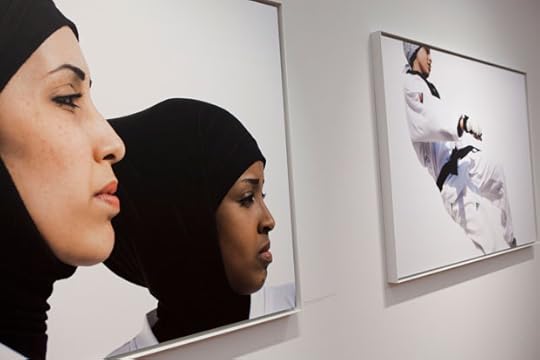
Neither of these positions acknowledges the agency, the spirit or the will of women as individuals, or in the case of sports, as competitors capable of incredible strength and endurance.
The success of Arab female politicians, activists or even artists is often based on their ability to separate their womanhood from their functionality in a male-dominated environment. In this way, sport and the body of the female athlete becomes the purest symbolic battleground for feminism simply because it is impossible to divorce the individual athlete from her body.
At least this seems to be the case in the following two stories.
Los Angeles, August 8, 1984 – It’s the final of the women’s 400 metre hurdles. Moroccan Nawal El Moutakawel, tents herself in a green Adidas tracksuit and stretches in the afternoon sun. Having trained on the beaches outside Casablanca, Nawal is running this race for her country, to prove the world wrong.
What happens next is of incredible symbolic importance, not only to Olympic history but to the future of Arab women in sport.
In a few minutes time she will win the first Gold Medal ever by an Arab female and the first ever for Morocco. She will lap the stadium with the red Moroccan flag streaking behind her like a flaming mane. She will go home to adoring crowds in her home. Hailed as a heroine, every female baby born on that day would be named in her honor.
Exactly eight years later, the second event takes place in Barcelona, August 8, 1992 – This time the women’s 1500 meter run. Hassiba Boulmerka from Algeria steps lightly to the starting line and bows in wait for the gun. She has had to train away from home after a storm of death threats from Islamists who took issue with her bare legs at the previous year’s World Championship in Tokyo.
Since then, she must be escorted to and from practice and the race that day by armed guards. She is running this race for herself, to prove her country wrong.
When she pulls into the lead, a final 200 m dash, she doesn’t fall across the finish line, she leaps into it. Like El Moutakawel before her, Boulmerka has just won the first gold medal for Algeria.
She looks stern as she pumps her fist in the air.
Later she’d describe this gesture as, “a symbol of defiance. It was to say: ‘I did it! I won! And now, if you kill me, it’ll be too late. I’ve made history!’”
As she runs her victory lap she lovingly hugs her country’s flag to her heart. It is a closed, protective gesture and a sharp contrast to El Moutakawel’s open victory lap.
These two very different, wordless gestures of victory illustrate how volatile the place of Arab women athletes is within a national context.
One athlete had the infrastructural and psychological support of her country and her family while the other didn’t. The Olympics in particular, being a deeply politicized event where nationalism can be most fervent and boundaries can be most pushed, gives an essential public push to those governments and societies who do not offer the support to female athletes that are required to nurture athletic talent.
Despite these pioneering women in sport, the environment is still hostile, perhaps more so than ever before in the current post-revolt turmoil. The women in this exhibition will each have to run bravely to their own battles both external and internal during their sporting careers.
Although Nawal and Hassiba both won Gold, in the end, Aisha didn’t win her race. Some years after the victory at Badr, when Aisha had put on weight from motherhood and lost her ease at flight, Mohamed prodded her to race again. This time as they bolted across the sand he beat her easily. When she brought up the rear, gasping for breath he said, “This is in payment for last time.” Now, as you are introduced to the athletes in this exhibition, try to strip away the politics, the religion and even the gender of these courageous people and I think you will find all that remains is the sacred question of a human’s sovereignty over its own body and beneath that, the flickering flame of unbreakable will.


Sophia Al-Maria's Blog
- Sophia Al-Maria's profile
- 34 followers


